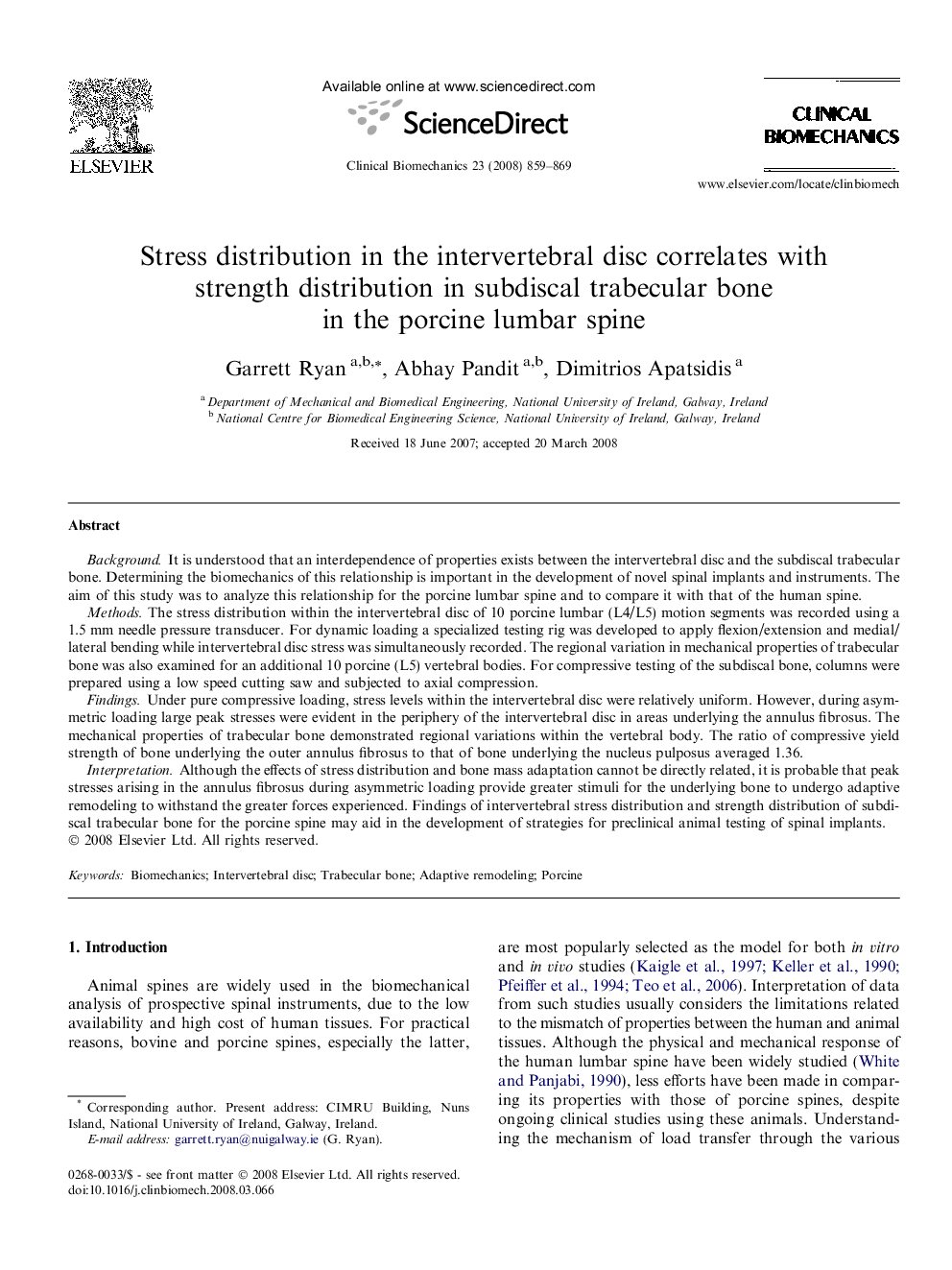| Article ID | Journal | Published Year | Pages | File Type |
|---|---|---|---|---|
| 4051382 | Clinical Biomechanics | 2008 | 11 Pages |
BackgroundIt is understood that an interdependence of properties exists between the intervertebral disc and the subdiscal trabecular bone. Determining the biomechanics of this relationship is important in the development of novel spinal implants and instruments. The aim of this study was to analyze this relationship for the porcine lumbar spine and to compare it with that of the human spine.MethodsThe stress distribution within the intervertebral disc of 10 porcine lumbar (L4/L5) motion segments was recorded using a 1.5 mm needle pressure transducer. For dynamic loading a specialized testing rig was developed to apply flexion/extension and medial/lateral bending while intervertebral disc stress was simultaneously recorded. The regional variation in mechanical properties of trabecular bone was also examined for an additional 10 porcine (L5) vertebral bodies. For compressive testing of the subdiscal bone, columns were prepared using a low speed cutting saw and subjected to axial compression.FindingsUnder pure compressive loading, stress levels within the intervertebral disc were relatively uniform. However, during asymmetric loading large peak stresses were evident in the periphery of the intervertebral disc in areas underlying the annulus fibrosus. The mechanical properties of trabecular bone demonstrated regional variations within the vertebral body. The ratio of compressive yield strength of bone underlying the outer annulus fibrosus to that of bone underlying the nucleus pulposus averaged 1.36.InterpretationAlthough the effects of stress distribution and bone mass adaptation cannot be directly related, it is probable that peak stresses arising in the annulus fibrosus during asymmetric loading provide greater stimuli for the underlying bone to undergo adaptive remodeling to withstand the greater forces experienced. Findings of intervertebral stress distribution and strength distribution of subdiscal trabecular bone for the porcine spine may aid in the development of strategies for preclinical animal testing of spinal implants.
